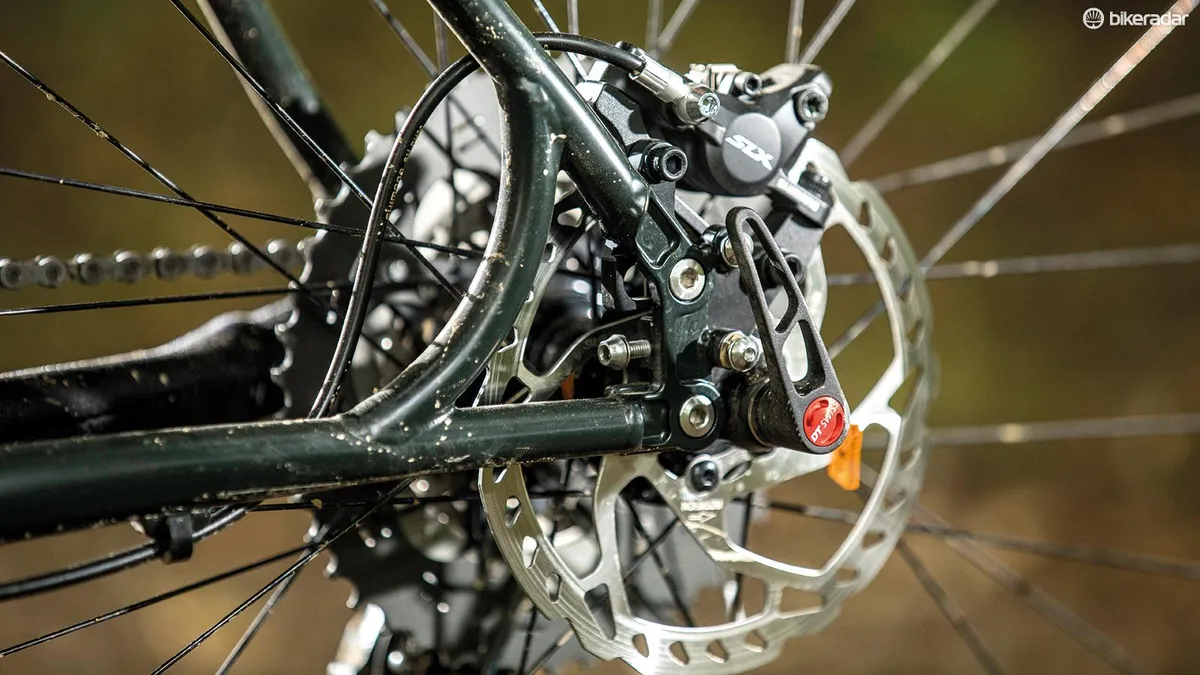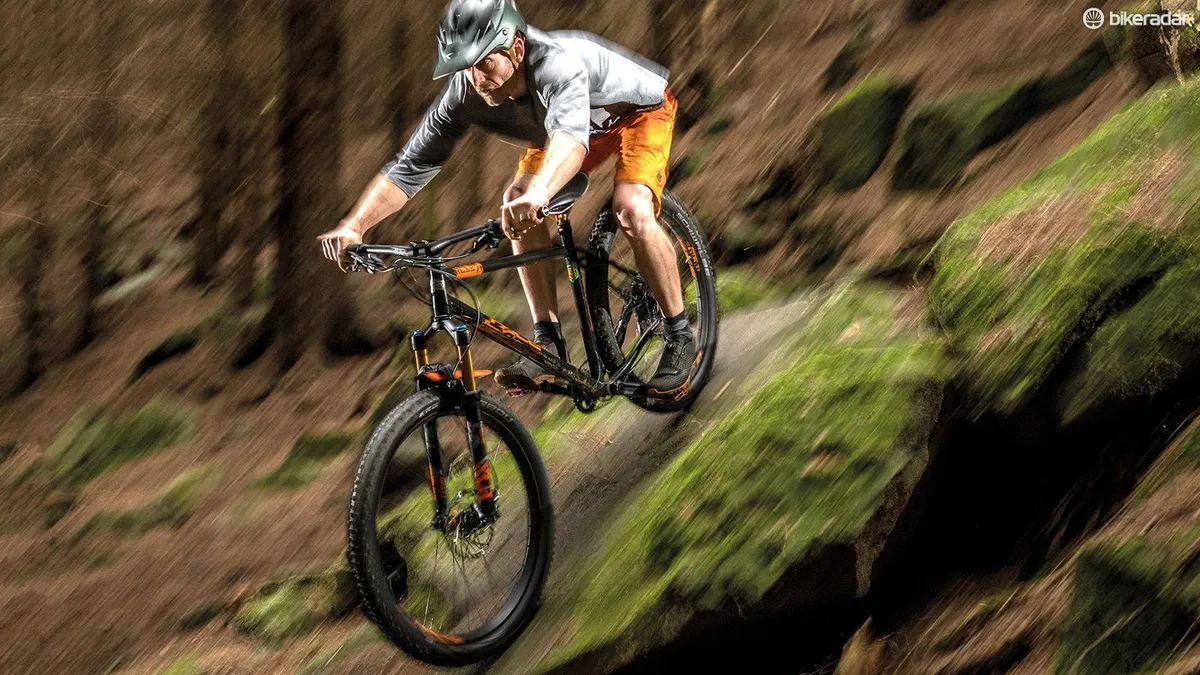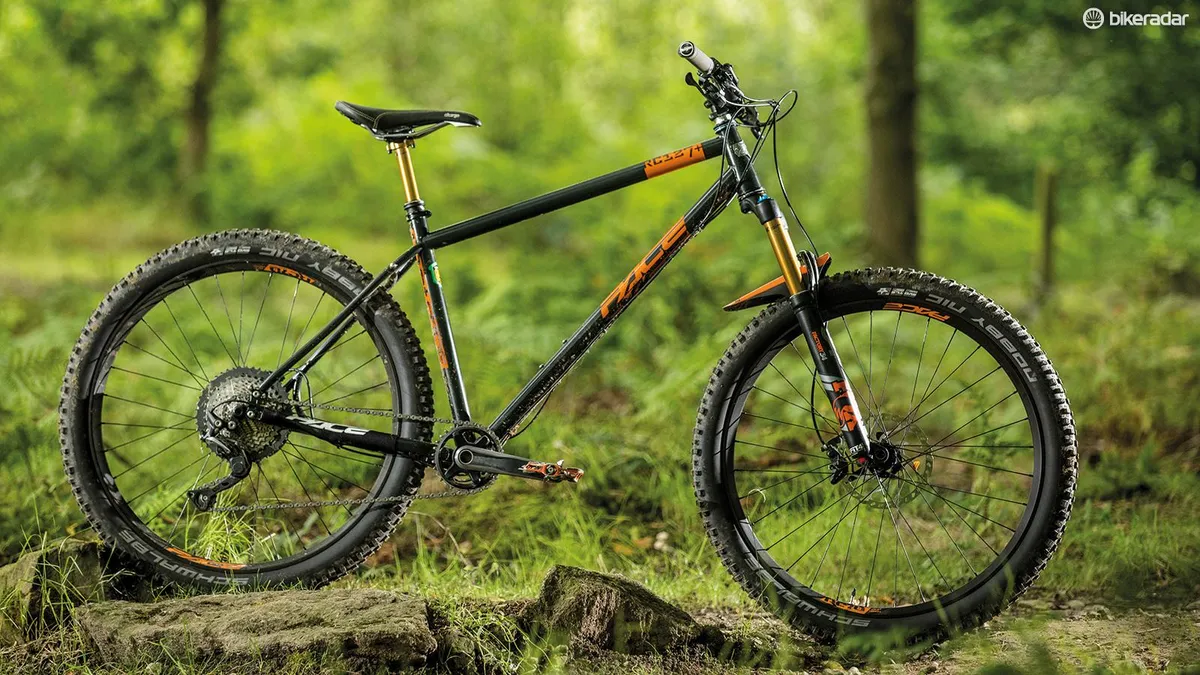Adrian Carter from Pace has been designing mountain bikes for 30 years now and he takes his time refining every new frame. That’s not great news if you’re impatient, but if you’re prepared to wait, the outcome of his relentless test riding is always a distinctive and deceptively quick bike.
Pace RC127+ specifications
- Frame: Reynolds 853 steel main tubes, custom chromoly steel rear end
- Fork: Fox 34 Float FIT4 Factory, 140mm (5.5in) travel
- Drivetrain: Shimano SLX M7000 w/ Shimano Deore XT M8000 cassette (1x11)
- Wheelset: Pace 35mm rims on Hope Pro 4 hubs
- Tyres: Schwalbe Nobby Nic Evo TLE SnakeSkin 27.5x2.6in
- Brakes: Shimano SLX M7000, 180/160mm rotors
- Bar: Race Face Respond, 785mm
- Stem: Pace prototype, 70mm
- Seatpost: Fox Transfer Factory 150mm dropper
- Saddle: Charge Spoon
- Weight: 13.58kg (29.94lb), large size without pedals
- Seat tube: 48.2cm
- Top tube: 63.5cm
- Seat tube angle: 73
- Head tube angle: 65
- Chainstay: 43.5
- Bottom bracket drop: 56.5mm
- Stack: 652cm
- Reach: 435cm
- Wheelbase: 1,201mm
For international pricing and delivery contact Pace direct.
Pace RC127+ frame and kit

The top-quality Reynolds 853 steel mainframe combines a neat mix of traditional practical features — threaded bottom bracket (BB), reinforcing throat gusset, external cable/hose runs — and modern performance enhancements, such as a tapered head tube and side-entry dropper post routing on the seat tube.
Swerved and curved stays loop out around the big rear tyre space (it’ll take 27.5x2.8 or 29x2.3in rubber) and carry the latest version of Pace’s adjustable ‘Slideout’ dropout system, in 148mm Boost width. The frame is available on its own for £575, in almost-black green or bright orange, with a choice of six decal colours.
I tested the base build, with a Shimano SLX groupset, 27.5x2.6in Schwalbe tyres and prototype Pace stem and rims. A selection of fixed upgrade packages are available, or you can go for a full custom build.
Pace RC127+ ride impressions

While its chunky rubber and short, upright position mean the RC127+ trudges on tarmac, as soon as you hit the trail it feels surprisingly fast. And this perceived speed is slower than its actual velocity — when I reviewed our ride data, we found the Pace had turned in climb times you’d associate with a 1kg carbon fibre race frame, not a nearly 2kg steel trail chassis.
The compliant frame feel and low-pressure, high-volume tyres – which help it float over potentially speed-choking sections – ensure that traction is never an issue. And the more we rode it, the harder we pushed the front tyre through the super-slack 65-degree head angle and big Race Face bar.
Spending more time on the bike (and seeing the speeds it was reaching) challenged our initial perception that the 435mm reach of the large size was way too short by contemporary ‘chaos bike’ standards. Adrian told us he’d tried several longer frame samples, and on bikes with shorter-travel forks he preferred the extra reach. But he found that hardtails with lots of front travel (the RC127+ can take a 150mm fork if you want) and a long top tube “don’t seem to weight and steer correctly when climbing”.
The Pace is certainly impeccably balanced and agile on slower-speed, super-steep and techy stuff, even if it still feels cramped when you jump onto it straight off a stretched-out enduro bike. Its slack head angle and super-low 300mm BB height mean that stability at speed isn’t the issue that its relatively short wheelbase might suggest.
In other words, while the numbers might not seem to add up, this is a bike that’s been designed based on super-techy Yorkshire riding. As a result, it’s an impressively smooth and deceptively rapid ride on typically twisty and treacherous UK singletrack, as well as being practically tough and compatible with both plus-size and 29er wheels/tyres.
Pace RC127+ early verdict
Pace’s floatingly surefooted steel singletracker is way faster and more fun than it looks on paper.

